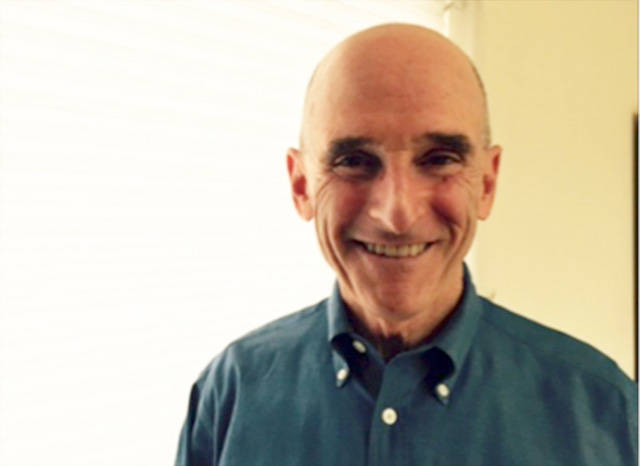After ending President Obama’s DACA Program (Deferred Action for Childhood Arrivals) in September, Donald Trump announced earlier this month that any legislation affecting the 800,000 young Dreamers covered by the program would have to be part of a deal that included, among other things, the building of his wall along the U.S. southern border, the hiring of 10,000 more immigration agents, and the imposition of harsher measures regarding refugees, including children crossing the border to flee violence and possible death.
He also made it clear that he would oppose legislation offering Dreamers (young people brought across our borders as children) any pathway to citizenship.
Some critics called this negotiating stance a form of hostage-taking. There’s a truth to the allegation, but there are wider implications as well. For the conflict over DACA — indeed, over immigration itself — represents a frontline struggle between authoritarianism and democracy. Since assuming power this past January, the Trump administration vastly expanded the threat of deportation affecting undocumented people in the U.S., shifting the emphasis from deportations based on felonies or “significant misdemeanors” to the targeting of anyone without papers: in essence, criminalizing 11.1 million people living here without citizenship, green cards, or other forms of validating documentation.
The new policy has meant stepped-up raids by immigration agents as well as the retention of for-profit detention centers that had been slated for phasing out by the Obama administration. I have met members of my community in Los Angeles — students, workers, even clergy — who were swept up in raids and “detained” (incarcerated) in these centers for no other reason than that they were tagged, categorized and criminalized as “illegal aliens.” Released after weeks or even months of confinement due to supportive efforts by immigration activists and attorneys, these individuals testified to the degrading, dehumanizing experiences of arrest and imprisonment. One of the for-profit facilities not far from where I live, the Adelanto ICE Processing Center, has been the site of detainee hunger strikes as well as citations by members of Congress for substandard food, medical neglect, and other abuses.
It’s true that these fellow community members, former detainees of Adelanto and other facilities, are not U.S. citizens, but they are human beings, fully entitled by the Universal Declaration of Human Rights to protection from “cruel, inhuman or degrading treatment or punishment.” This protection, along with all other unalienable rights due to every person living on this planet, is an essential cornerstone of a democratic society.
We are now at a crossroads, with one path leading ever more deeply into a realm of state-sponsored terror, another opening to the genuine possibility of a just and inclusive democracy. Neither path is an imaginary construct. The state-sponsored terror is visible today in the faces of undocumented people as they encounter the words of ICE Director Thomas D. Homan: “If you’re in this country illegally, and you committed a crime by entering this country, you should be uncomfortable. You should look over your shoulder.”
Homan directed his message to all people without papers, but the discomfort he aroused unsettles those who are citizens as well: not the people taken in by Trump’s race-baiting and scapegoating, but the citizens who are genuinely ambivalent about the administration’s constant references to “illegal entry,” i.e. that if people entered the country without proper authorization, they have broken the law and must be subject to the consequences.
The problem with this formulation is that it ignores a long history in which powerful economic and political interests have determined the relative porousness or impermeability of our borders, particularly our southern border. Large agribusinesses in the Southwest, for example, not only pressed to institute the Bracero, or imported contract labor, program that lasted from 1942 to 1964; they also simultaneously encouraged the inflow of illegal workers who could be paid even more cheaply than the braceros. Historian Mae Ngai has characterized these arrangements a form of “imported colonialism.”
Over the years, as more and more people entered and settled in the U.S. from Mexico, Central America, and other countries, seeking safety or a better economic future for themselves and their families, they entered a wide range of industries, not only in agriculture but in hospitality, construction, food processing, and other kinds of manufacturing. In the 1980s, when their contributions to the country were still acknowledged at the policy level, a Democratically-controlled Congress was able to pass the last piece of legislation that authorized a pathway to legalization, i.e. citizenship (the 1986 Immigration Reform and Control Act).
Since that time, nativist think tanks and various conservative groups have gained the upper hand in variously constructing immigrants, undocumented and documented, as freeloaders or as threats to Americans’ safety and economic security. That is why passing the Dream Act, currently before Congress and offering Dreamers a pathway to permanent resident status, would be an important step in helping challenge these invidious constructions.
But it’s only a step. The work of undoing racist myths cannot stop until there are pathways to full enfranchisement for all 11.1 million of our co-workers, employees, friends, and fellow community members. This work cannot stop as long as any form of tragic exclusion continues to blight our nation, forcing people into the shadows and denying them full participation in the co-creation of our collective destiny. We may be in a crisis, but the crisis offers us a unique opportunity to redeem the promise of American democracy — if only we can recognize the opportunity and seize it.
Andrew Moss, syndicated by PeaceVoice, is an emeritus professor at the California State Polytechnic University, Pomona, where he taught in Nonviolence Studies for 10 years.


